12 Unexpected Embroidery Facts You May not Know
Did you know that people can use human hair to embroider and even embroidery techniques can be applied to pieces of wood? Though being an embroidery enthusiast, there are various embroidery facts in several intriguing aspects that you may not know.
In this article, let K-Embroidery discover 12 unexpected embroidery facts that will blow your mind!
1. One of The First Embroidery Facts is That The Origin Of The Word “Embroidery” Comes From French
The term “embroidery” originates from French: “embroider” (embroder) from Old French “broder”, which means “to sew.” The suffix “-er” indicates someone who does the action, derived from the verb “brodeur,” which comes from the Latin “brodus”, meaning ’embroidered’.
2. Fun Facts About Embroidery
- An archaeological excavation in Sungir, Vladmir in Russia revealed the remains of a Cro-Magnon (believed to have been alive around 30,000 BC) in the year 1964. His hat, fur, and boots were decorated with parallel rows of ivory beads. This shows that this art is older than 30,000 BC!
- Primitive instances have been found across the globe from China, Northern Europe, and Egypt. Touches of embroidered crafts have been perceived in surviving works from the Iron Age (1300 BC-600 BC).
- In the Middle East embroidery began to represent social status. It was adorned by rich Muslims.
- The biggest piece of embroidery work is now at the Bretagne Museum in northern France. It is called Bayeux Tapestry and is 50 cm in height and 70 m in length. It was completed around the 1070s. It depicts the tale of William the Conqueror’s acquisition of Britain in the Battle of Hastings.
- Cross stitch came about in the 1800s in England.
- Josue Heilmann developed the first-hand machine in the year 1828. It did the work of up to four people. It brought the fabric to the needle rather than the needle to the fabric. The designs were six times the size of the original. It took quite a bit of coordination to run the machine. He could only sell 2 units because of fear of it threatening the industry.
- Isaac Groebli designed a machine that had a boat shaped shuttle, that contained a bobbin of thread, that created a backing stitch. His son improved it and made it an automatic machine. Many viewers believed that the work from it was done by hand because it was so high quality.
- Around 1900 mail order catalogs and paper patterns helped embroidery become more common. This allowed embroidery to be done by other people than the upper class. Cheaper materials were used.
- Primarily women embroidered historically. However it is now a past time of some men. Henry Fonda and Gustaf V, King of Sweden both enjoyed this pastime.
- In 1911 the Singer Sewing Company created a multi-head sewing machine which revolutionized machine embroidery production.
- In the 1980s Wilcom introduced the first computerized embroidery designs. Today’s machines make everything from embroidered designs to lace and cutwork to be created in a fraction of time it would take to do by hand.
- There are different classifications of embroidery work. It can be classified by how the design stitched on to the base fabric. These classifications are free or surface embroidery, counted embroidery, and needlepoint or canvas work.
- The type of needle used depends on the fabric you are using.
People now embroider on wood.
3. Embroidery Can Be Done On Multiple Materials
When it comes to embroidery, the first thing you might think of is a design stitched on fabric. The truth is that this technique can be applied to many materials, including photos, postcards, paper, and even plant leaves and pieces of wood.
To embroider wooden products, follow these steps:
- Choose a wooden item (a wooden box, wooden cuff, wooden furniture, etc.)
- Mark the chosen design onto the wood surface, which can include words or patterns.
- Carefully drill holes along the design lines.
- Smooth the surface by sanding it to remove any rough edges or leftover markings.
- Thread the holes.
- You should paint or stain the wood before you begin threading.
If you are intending to create unique products for your business, you can take wooden products into account.
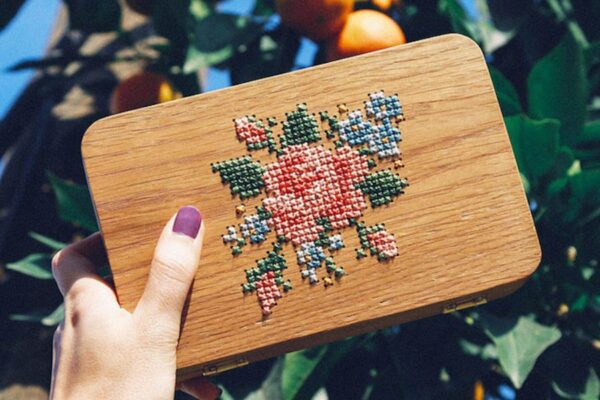
Read More: The Evolution and Transformation of Embroidery History
4. It Is Possible To Use Human Hair To Embroider
Along with fabric and needle, thread is another one of the embroidery essentials. There is a wide variety of thread: single thread or double thread, cotton thread, silk thread, black or colored thread.
It may seem surprising, you can use human hair to embroider. In Mexico, to formally accept the marriage proposal, a handkerchief was sometimes embroidered with the groom’s hair. And people also used hair to embroider Buddhist images in late imperial China.
But it is also possible to use less conventional ones. For centuries all over the world, gold and silver threads were symbols of wealth, power and social status, decorating the clothing worn by the upper class or religious objects.
5. Embroidered Materials Is Very Durable
One of the amazing embroidery facts is that embroidery adds a layer of protection to clothing and fabric, making them durable enough to withstand washing machines, fabric cleaners, and the rigors of daily use without damage. Even weather conditions and heavy laundering that uses high heat can not break down the fibers.
Moreover, the colors of embroidered designs stay vibrant and vivid for years to come, retaining the longevity and visual appeal of the garments. From this point of view, embroidery combines form and function!
In a market where durability is often sacrificed for style, K-Embroidery stands as a beacon of quality, offering products that excel in both aspects. K-Embroidery leads the industry with its commitment to producing embroidered products that are both visually stunning and exceptionally durable.
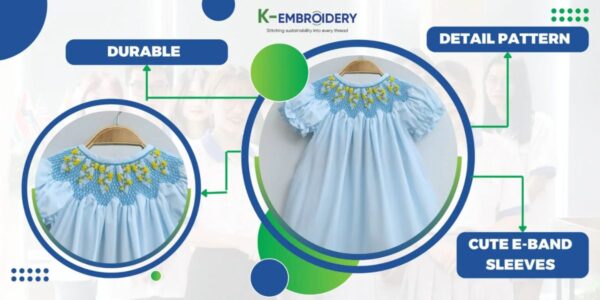
6. Embroidery Is Not Applique
The two seem strikingly similar yet they have their differences. Embroidery involves weaving different-colored thread onto a material while applique is when a person sews a piece of cloth to another material to form a picture or pattern. The two techniques can work together, however, and many designs combine both embroidery and applique technique to create magnificent works.
7. Storytelling Through Design
Embroidery has been used throughout history to tell stories and convey messages through its detailed patterns. Whether it’s a classic folktale or a personal experience, the design features can depict emotions, memories, and cultural backgrounds. Every stitch serves as a part of the artist’s storytelling, drawing the observer into a realm of symbolism and creativity.
For instance, some Native American tribes have used embroidery to tell stories about their culture and to teach life lessons.
8. Bayeux Tapestry Is Not A True Tapestry
Depicting the events leading up to and including the Norman Conquest of England in 1066, Bayeux Tapestry spans approximately 230 feet in length and comprises 70 intricate scenes embroidered onto a linen cloth.
Despite its name, it is not a true tapestry but rather an embroidered cloth, and this is one of many embroidery history facts about Bayeux Tapestry. Yet its historical significance and detailed imagery have solidified its status as an iconic masterpiece of medieval embroidery, revered and studied by scholars and art enthusiasts worldwide.
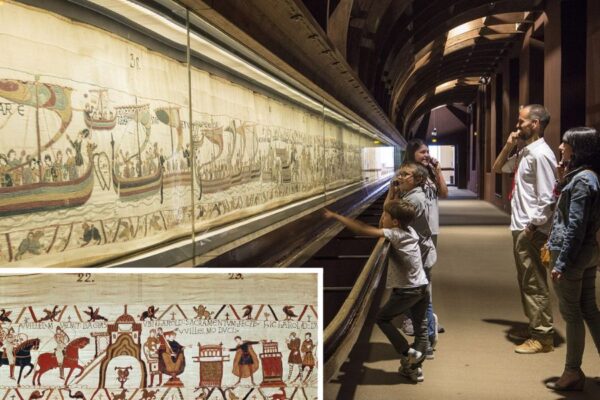
9. ot All Fabric Can Use The Same Needle
In embroidery, not all fabrics and designs can use the same needle. If your fabric is tightly woven, you will need a sharp pointed needle. However, if it is linen or canvas, use a blunt one instead.
The size matters as well. A short needle is good for speed. However, if you are planning to loop your thread around the needle, then you’ll need a longer needle.
10. When Embroidery First Came Is Unknown
Another among surprising embroidery facts is that historians don’t have an exact timeline for the origins of embroidery. However, there are ancient examples found in places like ancient Egypt, the Chinese Zhou Dynasty, and even the Iron Age in Northern Europe.
For instance, silk thread used in chain stitching in China dates back to the 3rd Century during the Warring States period. Recently, a fossil was discovered showing evidence of embroidery on hunting items used long ago.
Additionally, in 1964 near Kyiv in Russia, archaeologists found some of the earliest known embroidery fragments, estimated to be around 30,000 years old. These handcrafted designs in such a cold climate likely provided extra warmth in clothing.
11. Hand-embroidered Products Are More Highly Appreciated
Embroidery can be by hand or by machine depending on the intended use and prepared materials. For machine making, the product will save time and labor, leading to cost savings.
However, one of unexpected embroidery facts is that machine-embroidered products often have less sophistication and flexibility than hand-embroidered alternatives. While hand-embroidered can be done on a variety of fabric patterns and create many different details, machine-embroidered is limited to the machine frame and is not valued as much by customers.
All the K-Embroidery’s products are entirely embroidered by hand by a team of skilled Vietnamese artisans. These hand-embroidered products are more intricate, more sophisticated, and have a higher value than machine-embroidered products. Each product is highly creative and meticulously presented.
For more information about K-Embroidery’s products, contact our Sales team via Phone & Whatsapp: +84 85 555 5961.
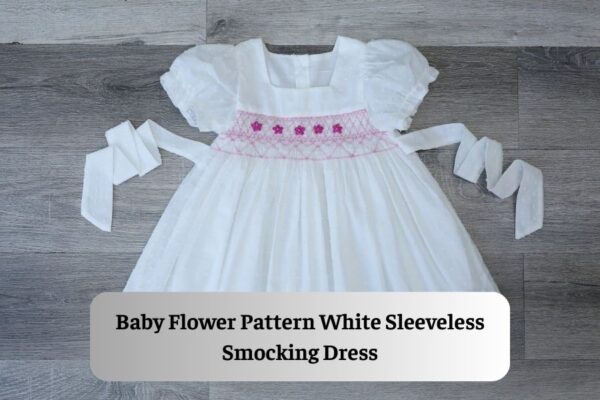
12. Second World War Escape Map
In World War II, silk escape maps were crucial for soldiers and helped them escape if they were captured or shot down in enemy territory. These maps were made from delicate silk because it was lightweight, making them easy to carry.
Silk could also be folded up tightly and small, so easy to conceal and wouldn’t rustle when crumpled up. Moreover, cloth maps don’t tear when they get wet or make noise and can be hidden more easily than paper maps. Most of them were made from silk or rayon.
13. World’s Longest Embroidery
The Embroiderers’ Guild in the UK organized what would become the world’s longest embroidery to celebrate its 100th anniversary. The project began in 2003 and by 2009, it had reached over 605 meters, setting a new Guinness World Record. This massive embroidery was stitched by around 7,000 embroiderers from all around the world.
The embroidery showcases a wide variety of designs, colors, and themes, including 3D insects, flowers, and people’s names. Participants were given the freedom to choose any motif they liked. By 2017, the embroidery was exhibited at different locations across the UK, where people could continue to add to it. The Guild has also initiated a similar project called the World’s Longest Embroidery for Schools, inviting schools from Australia, Canada, the UK, and the USA to participate.
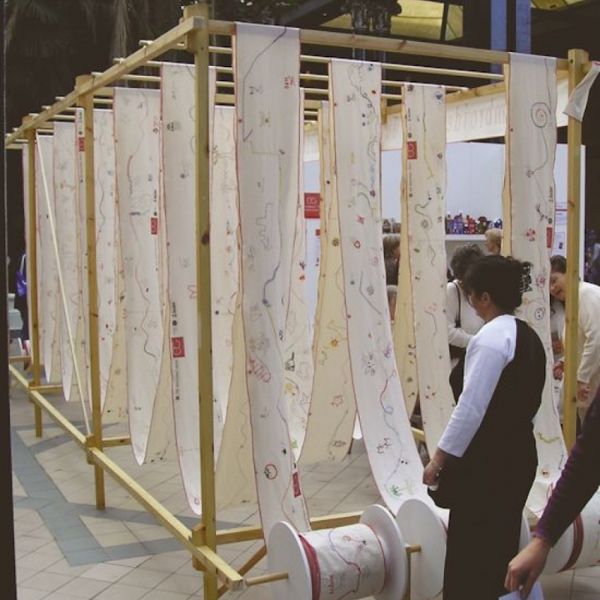
14. Conclusion
In general, the world of embroidery is full of surprises and hidden gems waiting to be explored. From the unexpected use of human hair in embroidery to the durability of embroidered materials, embroidery facts reveal the richness and versatility of this age-old craft.
Contact K-Embroidery manager to buy high quality, cute and safe hand-sewn products for children via WhatsApp: +84855555961 to get the best price and order now!
Contact:
- Address: 5th Floor, Building No. 169 Nguyen Ngoc Vu, Cau Giay District, Hanoi
- Hotline: +84855555961
- Website: https://k-embroidery.com/
- WhatsApp: +84855555961


